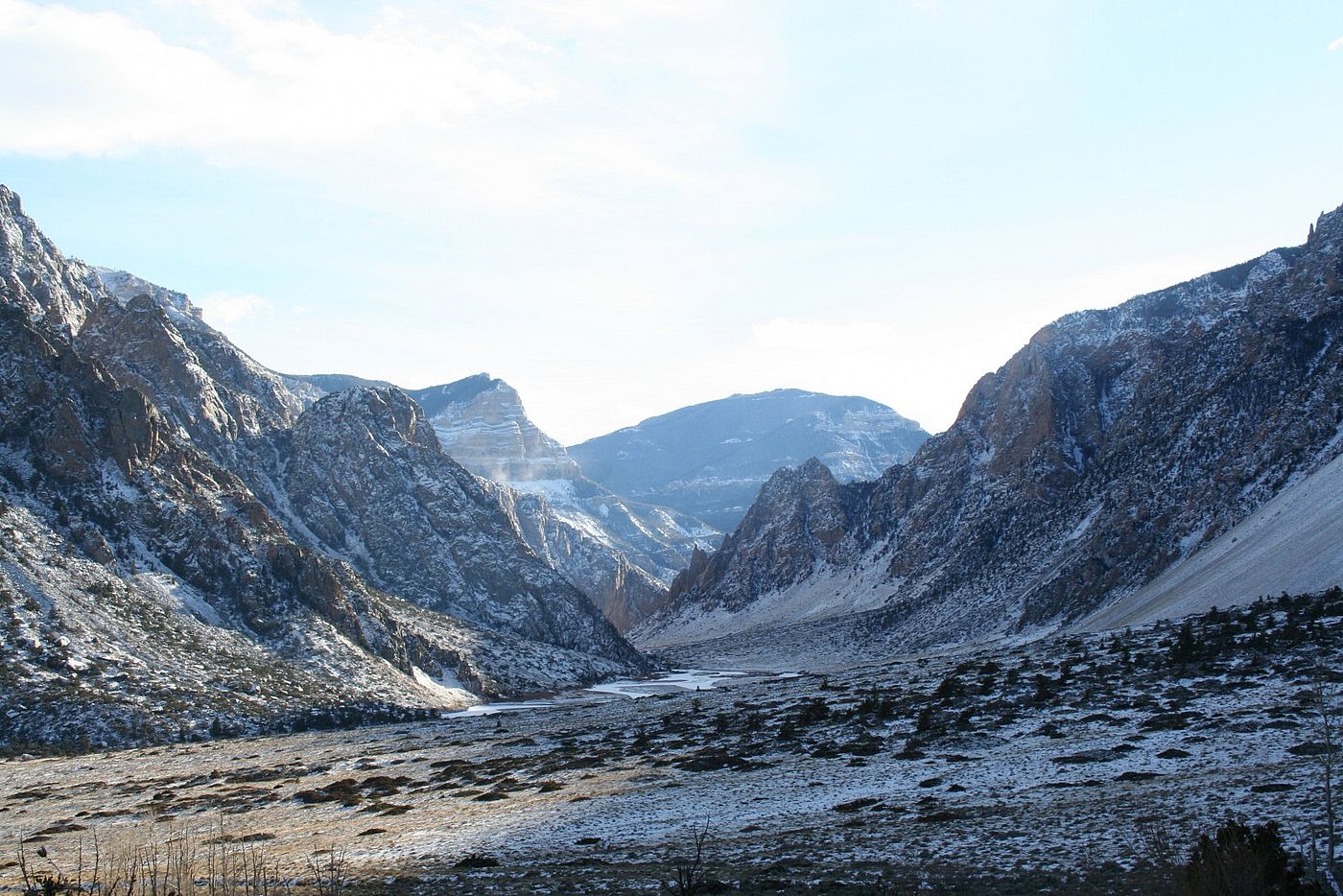
Yakety Yak, Let’s Make Glacier Gak!
During this activity students/families will watch two videos–one introducing them to glaciers and a second about how glaciers shaped the northern Bighorn Basin in Wyoming. They will then make their own glacier and landscape to observe how glaciers move!
What Are Glaciers?
Northern Bighorn Basin Glaciation
Let’s Make Glacier Gak
Materials
- Two 8-oz. (One 16-oz.) bottles of white glue
- Borax
- Large mixing bowl
- 8-oz. cup
- Spoon
- Tray
- Measuring cup
- Blue food coloring
- Water
- Zip lock bag
Preparation Time
About 10 minutes
Activity Time
20-30 minutes
Recipe
- Empty glue into a mixing bowl. Fill the empty bottle(s) half-full with warm water and shake. Pour into the bowl and mix.
- Add and stir a heaping tablespoon of Borax to 1 cup of warm water. Not all of the Borax will dissolve.
- Add about 10-15 drops of blue food coloring to your glue mixture before adding the Borax solution.
- Slowly add a little of the Borax solution to the glue, while stirring the glue in the mixing bowl. Long strands of glue and Borax will start to form.
- As the mixture becomes more solid, use your hands to mix. Keep adding the Borax solution until the gak has a putty-like consistency. Place glacier gak on tray and let it rest as it spreads out on the tray.
Adapted from https://www.stevespanglerscience.com/lab/experiments/glacier-gak/
Build a Landscape
Materials
- Lego blocks or other kids building materials
- Small pebbles
- Aluminum baking pan
- Popsicle sticks
Activity
Explain to students that as glaciers move , gravity is one of the forces pulling it downward. Remind them that glaciers pick up materials, such as rocks, sand, and other materials on Earth.
Have students build a landscape in an aluminum baking pan with the materials listed above. They can use other similar craft supplies as well. Their landscape should have elevation, so that their glacier gak will move down when pulled by gravity. By adding small pebbles to their landscape, students are providing material that their glacier can pick up and move. Based on what they have learned about glaciers, students will build their own landscape.
Once students have created their landscape, have them place their glacier gak on top of it. Note, that the gak should remain in one large chunk when first added to the landscape. Point out to students that just like a real glacier, their glacier gak will move slowly and pick up Earth’s materials as it moves. Students can rebuild their landscapes and add their glacier gak multiple times as they make observations and draw conclusions.